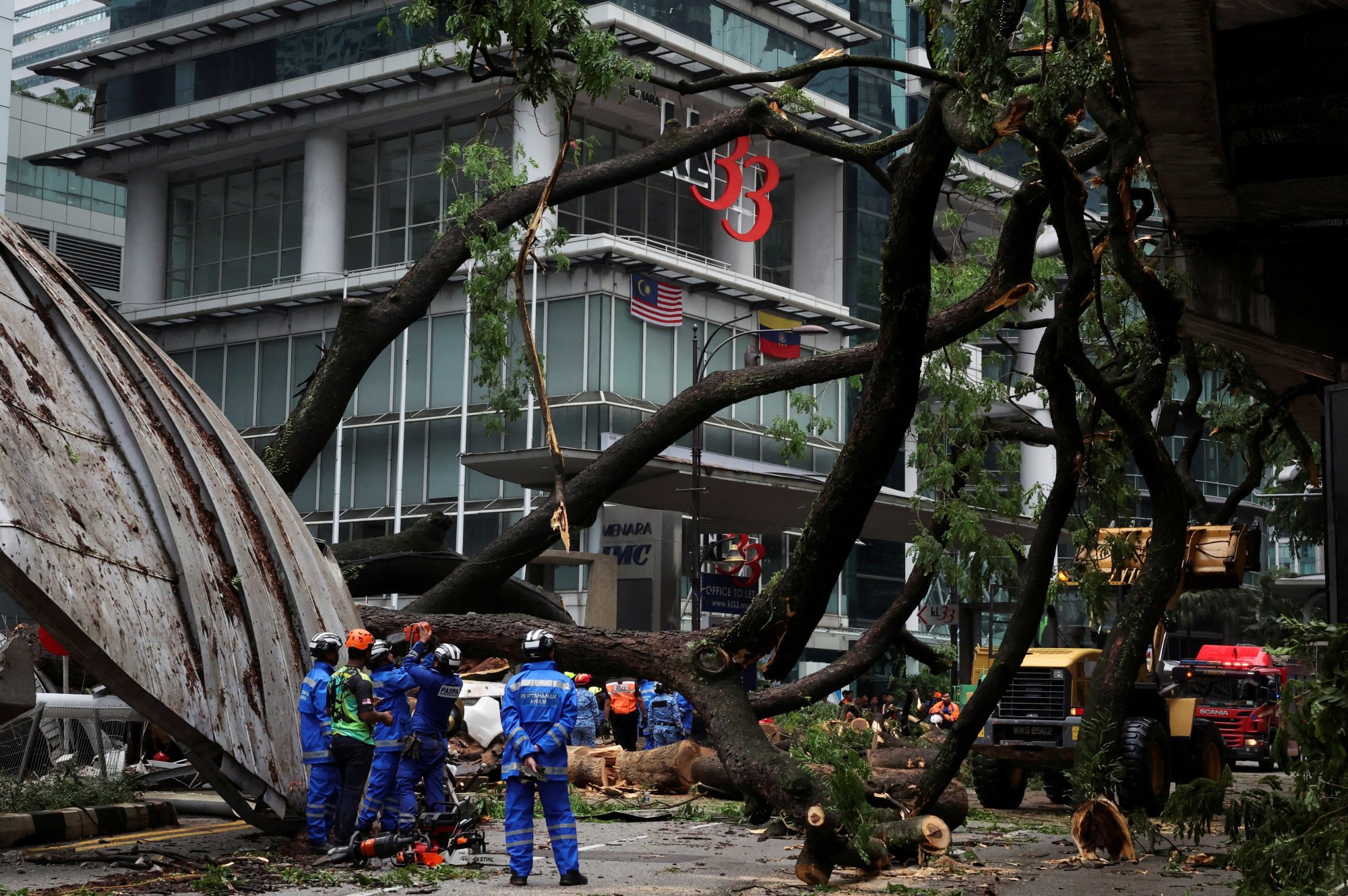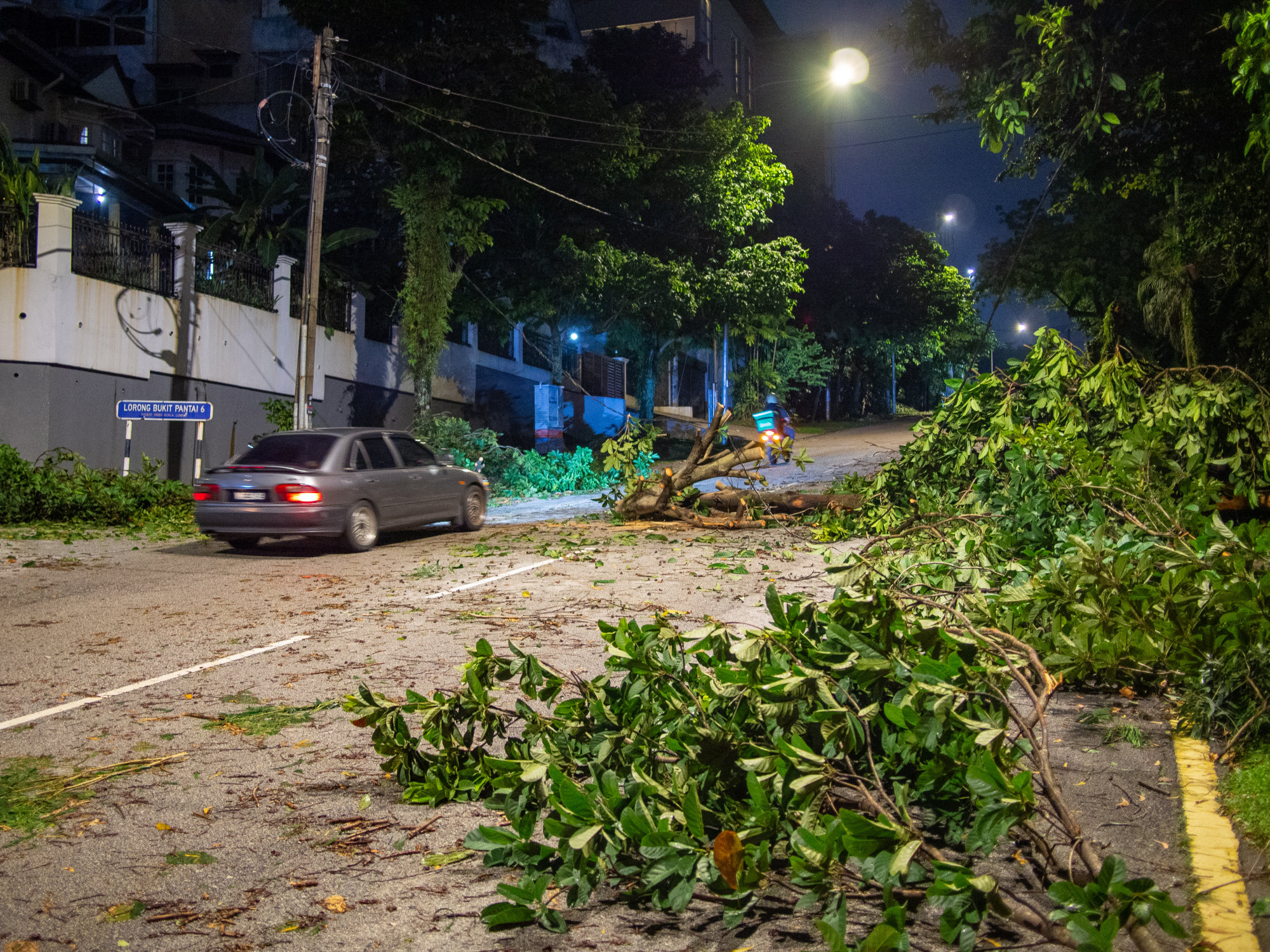The worst on May 7 uprooted a large, old rain tree that had been a landmark on the city’s inner ring road, killing a 47-year-old motorist and blocking the busy thoroughfare, as well as an elevated monorail track along the route.
Since then, more storms have toppled trees, causing fear among the public over their safety and leading to calls for more preventive measures from the authorities.

Speaking to This Week in Asia, Saifful Pathil, one of Kuala Lumpur’s 21 certified arborists, said that the small number of experts in the field is an impediment to making sure the trees are safe.
All around the greater Kuala Lumpur area, trees have had their root structures paved over with concrete, harming their health. Cracks have also appeared in pavements near trees, endangering both pedestrians and traffic.
“There is a conflict between trees and development in the city centre,” Saifful said. “But the lack of enough certified arborists is a major hurdle.”
Kuala Lumpur is more than 243 sq km in size and Saifful said it takes him over two years to check every tree in his designated zone.

There were only 109 certified arborists in the whole of Malaysia as of 2018, according to former Deputy Housing and Local Government Minister Raja Kamarul Bahrin Shah, who said then that there were just 25 qualified to do tree risk assessments.
With so few experts, warning signs can be easily overlooked – including in the tree that fell on May 7.
It was over 50 years old and had only been checked once every two years, Federal Territories Minister Zahila Mustafa, the government official responsible for the greater Kuala Lumpur area, told reporters at the time.
In the weeks since, more than 175 high-risk trees – many over half a century old – have been earmarked for felling by city authorities.

Lee Chean Chung, the member of parliament for Petaling Jaya bordering Kuala Lumpur, called the number of arborists in Malaysia alarming.
“We have 151 local councils and only 109 certified arborists nationwide. This has to change,” he told This Week in Asia.
His constituency has reported an uptick in cases of trees being uprooted as well as roofs of schools and homes being ripped off by strong winds recently.
In his view, urban planners need to find a better balance between buildings and tree cover.
“It’s not just down to regular inspection, but it is also a reminder for urban planners to consider the space and species of trees to be planted,” he said.

Arborist Saifful notes that only one or two Malaysian candidates from a cohort of over 30 successfully obtain the International Society of Arboriculture certification each year. He is calling for the use of technology to help the limited number of certified tree surgeons work more efficiently.
“One such technology is a tree-tilt sensor, which is installed on trees and would send a warning if the tree moves abnormally,” he said, adding that such a device would have given advanced warning of May’s fatal toppling.
Such technology has been in use in neighbouring Singapore since 2018.
In its absence, Kuala Lumpur residents are taking their own precautions.
“I used to prefer parking my car close to trees for shade, but now I rather deal with the heat,” said Nurhana Yaakob, an executive at a logistics company in central Kuala Lumpur.

